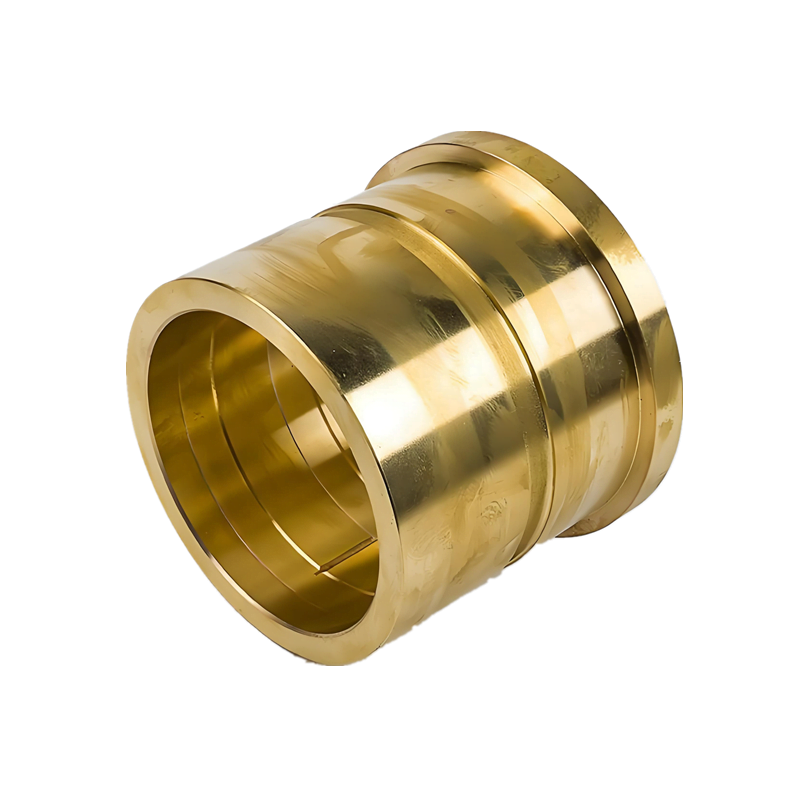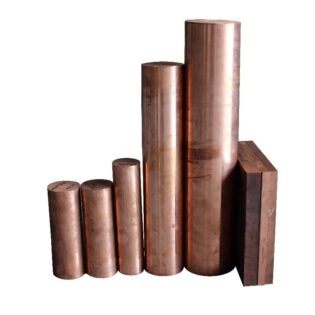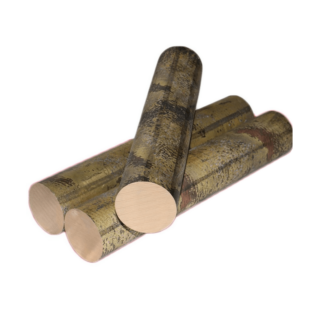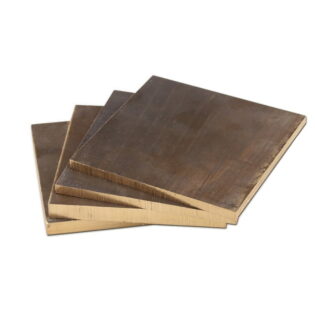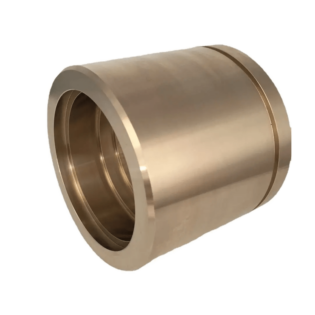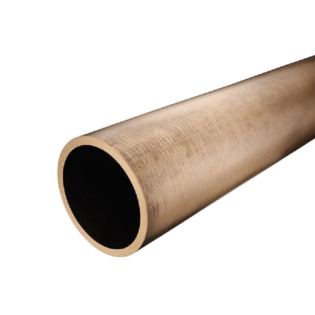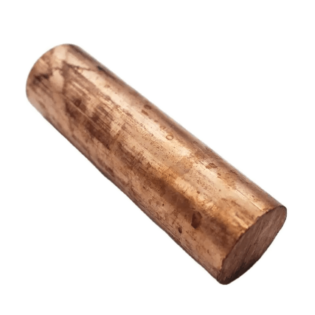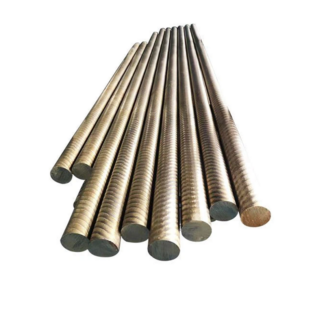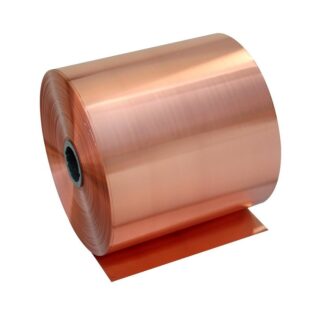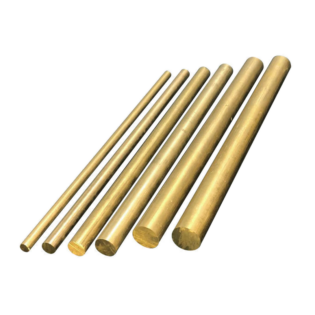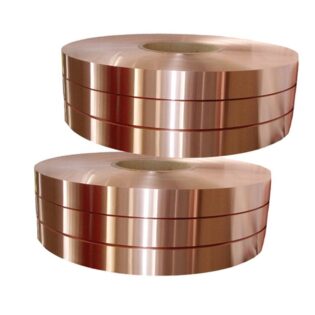C90300 High Tin Bronze Product Introduction:
• Composition: 86-89% copper, 7.5-9% tin, other elements
• Key features:
- High strength and excellent wear resistance
- Good corrosion resistance
- Suitable for heavy load and low-speed applications
• Main applications: - Bearings and gears
- Marine propeller hubs
- Valve components
• Processing characteristics: - Excellent casting properties
- Good machinability
• Complies with international standards like ASTM B505, B271
• Wide temperature range applicability, from low to moderate temperatures
• Available in various forms: bars, plates, tubes, castings
C90300 Tin Bronze Product Introduction
C90300 is a high-tin bronze alloy known for its excellent wear resistance, high strength, and good corrosion resistance. This versatile material is widely used in various industrial applications, particularly where high load-bearing capacity and low-speed operations are required.
Chemical Composition
The chemical composition of C90300 is crucial to its performance characteristics:
| Element | Percentage Range | Function |
|---|---|---|
| Copper (Cu) | 86.0 – 89.0% | Base metal, provides ductility and conductivity |
| Tin (Sn) | 7.5 – 9.0% | Increases strength and wear resistance |
| Lead (Pb) | 0.30 – 1.5% | Improves machinability |
| Zinc (Zn) | 1.0 – 3.0% | Enhances fluidity in casting, deoxidizer |
| Nickel (Ni) | 1.0% max | Improves corrosion resistance |
| Iron (Fe) | 0.20% max | Grain refiner, increases strength |
| Phosphorus (P) | 0.05 – 0.35% | Deoxidizer, improves fluidity |
| Antimony (Sb) | 0.20% max | Enhances strength and hardness |
| Sulfur (S) | 0.05% max | Impurity, controlled to minimize negative effects |
| Aluminum (Al) | 0.005% max | Deoxidizer |
| Silicon (Si) | 0.005% max | Improves wear resistance |
Mechanical Properties
The mechanical properties of C90300 contribute to its suitability for various industrial applications:
| Property | Value |
|---|---|
| Tensile Strength (min) | 40 ksi (276 MPa) |
| Yield Strength (min) | 20 ksi (138 MPa) |
| Elongation (min) | 20% |
| Brinell Hardness | 70 HB (typical) |
| Density | 0.319 lb/in³ (8.83 g/cm³) |
| Modulus of Elasticity | 15.5 x 10^6 psi (107 GPa) |
Performance at Different Temperatures
C90300 maintains its properties across a range of temperatures:
| Temperature Range | Performance Characteristics |
|---|---|
| Low Temperature (-50°C to 0°C) | Maintains ductility and strength |
| Room Temperature (0°C to 30°C) | Optimal performance for most applications |
| Elevated Temperature (30°C to 200°C) | Gradual decrease in strength, still suitable for many applications |
| High Temperature (200°C to 300°C) | Significant decrease in strength, limited applications |
Industry Applications
C90300 finds use in various industries due to its unique properties:
| Industry | Applications |
|---|---|
| Marine | Propeller hubs, bushings, valve components |
| Automotive | Thrust washers, bushings, wear plates |
| Industrial Machinery | Gears, bearings, wear strips |
| Oil and Gas | Pump components, valve seats |
| Construction | Bridge bearings, heavy equipment components |
| Aerospace | Landing gear components, bushings |
Shape and Size Availability
C90300 is available in various forms to suit different manufacturing needs:
| Form | Size Range | Notes |
|---|---|---|
| Round Bars | 10mm – 300mm diameter | Standard lengths up to 3.6m |
| Hollow Bars | 20mm – 250mm OD, 10mm – 200mm ID | Custom lengths available |
| Plates | 5mm – 100mm thickness | Width up to 1.2m, length up to 3m |
| Tubes | 15mm – 200mm OD, 1.5mm – 25mm wall thickness | Standard lengths up to 3m |
| Castings | Custom sizes | Sand, centrifugal, and continuous casting available |
| Forgings | Up to 1000kg | Custom shapes possible |
Production Standards
C90300 complies with several important standards:
| Standard | Description |
|---|---|
| ASTM B505 | Standard Specification for Copper Alloy Continuous Castings |
| ASTM B271 | Standard Specification for Copper-Base Alloy Centrifugal Castings |
| ASTM B584 | Standard Specification for Copper Alloy Sand Castings for General Applications |
| SAE J461 | Copper-Base Alloy Castings |
| MIL-C-22229 | Military Specification: Castings, Bronze |
International Standards and Corresponding Grades
C90300 has equivalent or similar grades in different countries:
| Country/Region | Standard | Equivalent/Similar Grade |
|---|---|---|
| USA | ASTM/UNS | C90300 |
| Europe | EN | CuSn8 |
| Japan | JIS | CAC903 |
| China | GB | ZCuSn8Pb1 |
| UK | BS | PB3 |
| Germany | DIN | G-CuSn8 |
Welding Characteristics
Welding C90300 requires specific techniques:
| Welding Method | Suitability | Notes |
|---|---|---|
| Gas Tungsten Arc Welding (GTAW) | Excellent | Preferred for thin sections and precision work |
| Gas Metal Arc Welding (GMAW) | Good | Suitable for thicker sections |
| Shielded Metal Arc Welding (SMAW) | Fair | Requires proper electrode selection |
| Oxyacetylene Welding | Poor | Not recommended due to high heat input |
| Resistance Welding | Fair | Limited applications |
Processing Characteristics
C90300 can be processed using various methods:
| Process | Suitability | Notes |
|---|---|---|
| Machining | Excellent | Good machinability, produces smooth finishes |
| Forming | Fair | Limited cold formability due to high tin content |
| Casting | Excellent | Widely used in casting applications |
| Forging | Fair | Hot forging possible, limited cold forging |
| Heat Treatment | Good | Can be strengthened through heat treatment |
Polishing
Polishing C90300 can enhance its appearance and surface properties:
| Polishing Method | Effectiveness | Notes |
|---|---|---|
| Mechanical Polishing | Excellent | Achieves high luster |
| Chemical Polishing | Good | Suitable for complex shapes |
| Electro-polishing | Very Good | Provides smooth, bright finish |
| Buffing | Excellent | For final finish and high shine |
Heat Treatment
Heat treatment can modify the properties of C90300:
| Heat Treatment | Purpose | Process |
|---|---|---|
| Annealing | Stress relief, softening | Heat to 550-650°C, slow cool |
| Solution Treatment | Homogenization | Heat to 760-780°C, water quench |
| Age Hardening | Increase strength and hardness | Heat to 350-400°C for 2-4 hours, air cool |
Cold Processing
Cold working can alter the mechanical properties of C90300:
| Cold Working Method | Effect on Properties |
|---|---|
| Cold Rolling | Increases strength, reduces ductility |
| Cold Drawing | Improves surface finish, dimensional accuracy |
| Cold Forging | Limited applicability, may require intermediate annealing |
| Shot Peening | Improves fatigue resistance |
Advantages and Disadvantages
C90300 tin bronze has several pros and cons:
| Advantages | Disadvantages |
|---|---|
| High strength | Higher cost compared to lower tin bronzes |
| Excellent wear resistance | Limited formability |
| Good corrosion resistance | Lower electrical conductivity than pure copper |
| Low friction coefficient | Potential for dezincification in certain environments |
| Good machinability | Not suitable for high-speed applications |
| Suitable for heavy loads | May require special welding procedures |
Similar Products and Comparison
C90300 is part of a family of tin bronzes. Here’s a comparison with similar alloys:
| Alloy | Cu % | Sn % | Other Elements | Key Differences |
|---|---|---|---|---|
| C90300 | 86-89 | 7.5-9 | Zn, Pb, Ni | Base alloy for comparison |
| C90500 | 86-89 | 9-11 | Ni, Zn | Higher tin, increased hardness |
| C90700 | 88-90 | 10-12 | Ni | Even higher tin, maximum hardness |
| C83600 | 84-86 | 4-6 | Zn, Pb | Lower tin, increased ductility |
| C92200 | 86-90 | 5.5-6.5 | Zn, Pb | Lower tin, better for pressure-tight applications |
Conclusion
C90300 tin bronze is a versatile alloy offering a balanced combination of strength, wear resistance, and corrosion resistance. It excels in applications involving heavy loads and low speeds, such as bearings, gears, and marine components. While it has limitations like higher cost and limited formability, its good machinability and casting properties enhance its manufacturing versatility. When selecting C90300, engineers should consider specific application requirements, operating conditions, and economic factors. Its compliance with international standards and proven performance in various industries make it a reliable choice for many demanding applications in modern engineering and manufacturing.

